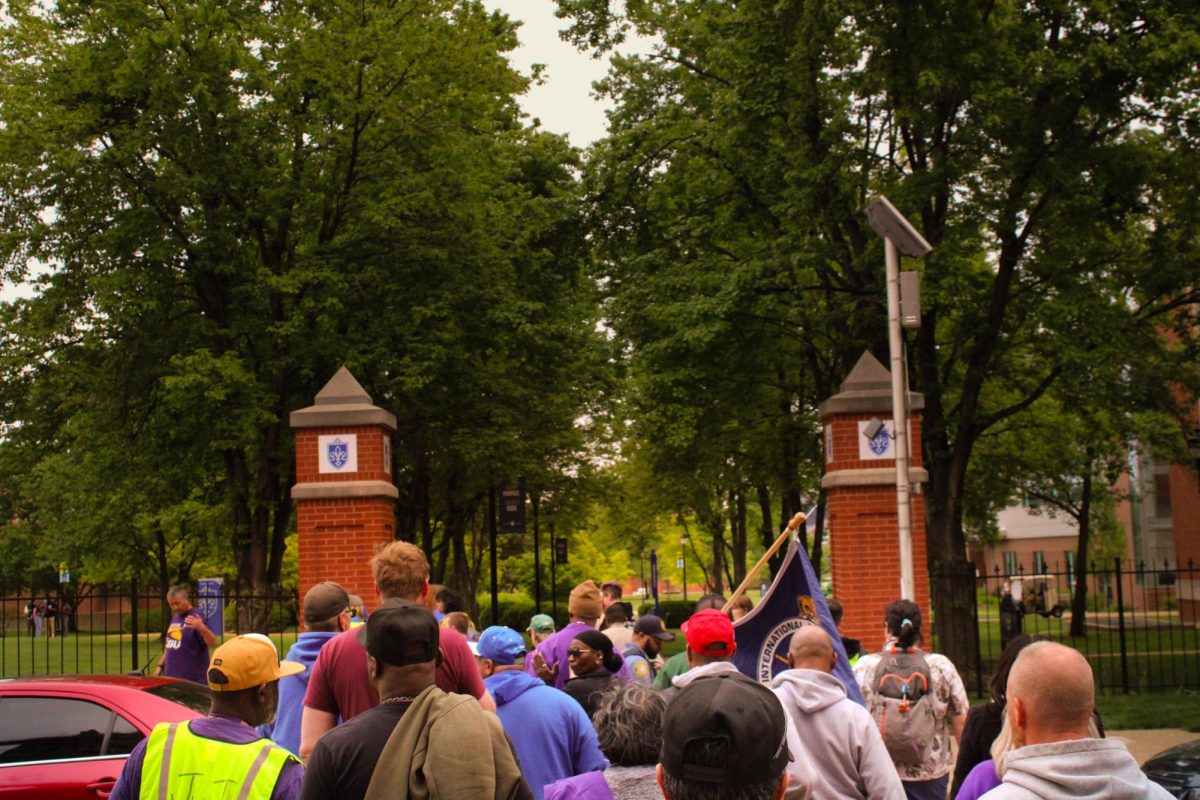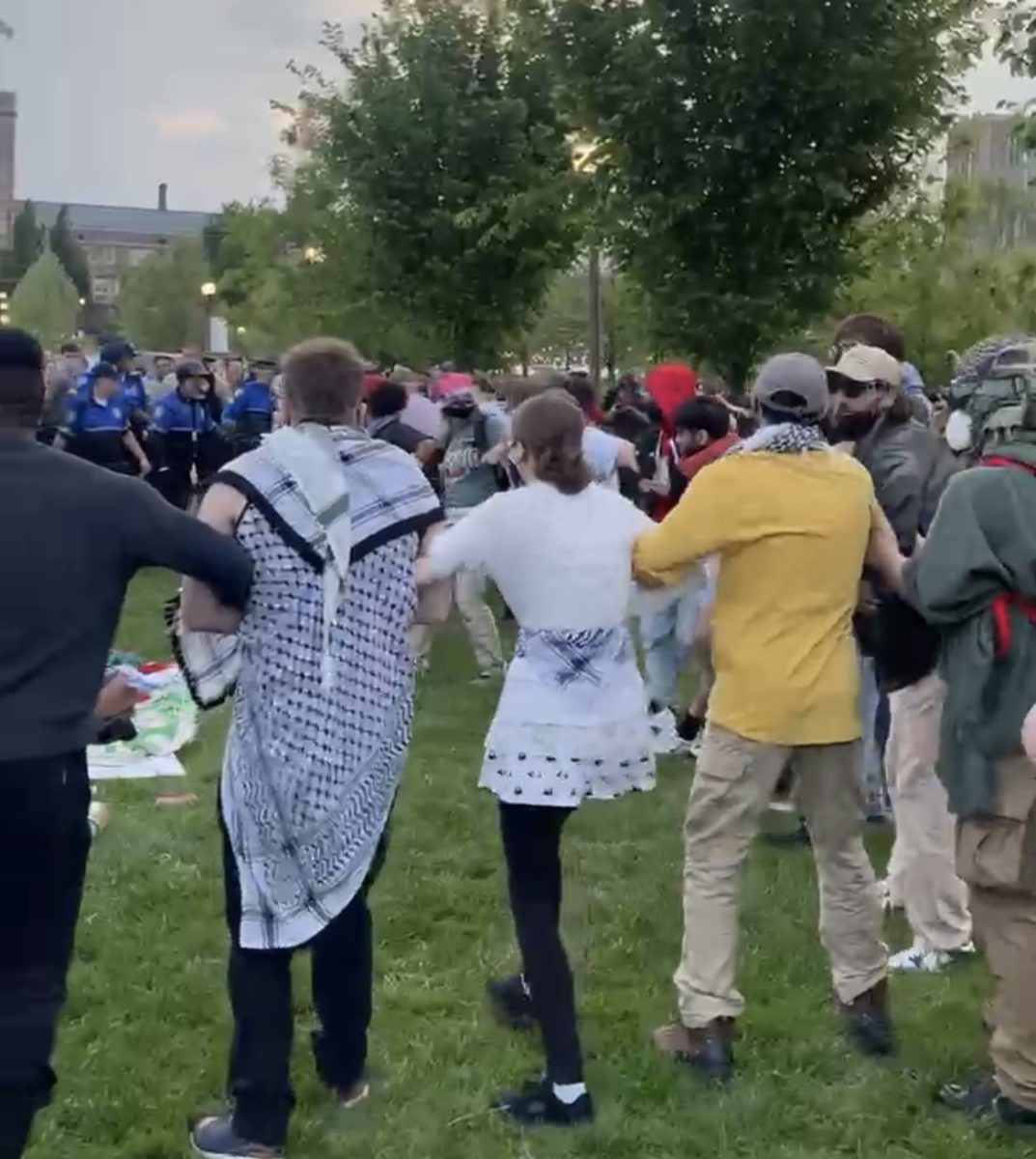
A small community of homeless people live in the tunnel beneath Tucker Blvd. During the winter, they keep a constant fire alive with wood scraps and empty food boxes. If they let it die, they freeze; nighttime temperatures dip below 30 degrees, and in that makeshift encampment there are no space heaters or REI goose-down sleeping bags. There is just the tin-drum fire and several warm bodies.
“Being homeless makes you live in conditions you can’t imagine,” Diane Starr, who has lived in the tunnel since August of 2009, said. “You have to make sure you don’t freeze when you step out to go to the bathroom.”
Mama Cass, another matriarch of the tunnel community, agreed. It was a hard life.
Cass cooked a frozen hamburger on a steel grate over the drum fire. It was one of the food provisions delivered to them almost daily by local outreach programs; on Mondays, a bike club delivers hot meals; on Wednesdays, school groups put together lunches for them. Once, they got a delivery of flashlights and wind-up radios. Sometimes, they receive bedding.
The Tucker Tunnel is one of those havens that the homeless often flock to; it is located near agencies like the St. Patrick Center, and provides necessary shelter and privacy. People are always coming and going; according to Starr, some stay only days, others for weeks and months. The flow picks up during the winter, when sleeping in parks becomes impossible.
Starr and Cass and their friends could take advantage of shelters, but even this has its own hardships. According to Cass, the shelters only allow you to stay the night, and make you leave with your belongings at seven or eight in the morning.
“Imagine having to carry a huge backpack full of [tightly-packed] things all over the city all day,” Cass said. “It’s hard to get any kind of assistance [or job] when you have that much stuff to carry.”

It is also difficult for Cass and Starr to get into rehabilitation programs. Both women are from Illinois, and these programs require a 90-day residency in order to participate in them.
For someone who is coming to St. Louis already homeless, that rule is a Catch-22: They can’t establish residency without getting into a program, but they can’t get into a program without residency.
So they live in the tunnel, at least for now. According to a St. Louis Post-Dispatch article, the city plans to fill in the space to reinforce the street above, which is in danger of collapsing.
To compensate for destroying their home, the city is working on getting all of the denizens into permanent housing by linking them to various private organizations around the city.
However, Starr and Cass have little hope that this will actually happen.
The only people thus far to be relocated were already involved in resettlement programs, and the city has not yet moved anyone else, though it has already begun to send forklifts and surveyors into the tunnel. Even if the city does pull through, Starr wants more to be done.
“It’s sad that only a handful of us have found safety, sad that only a handful have found peace of mind,” Starr said. “It shouldn’t just be the Tucker Family that gets housing, it should be everybody. We’re no different from [all the other homeless], except for the publicity.”
Since becoming homeless, Starr has become keenly aware of the plights of the needy. She has met many veterans who have been denied basic assistance, despite having served their country…[people] who “had no control over going to war and now have injuries or post-traumatic stress disorder.” Starr has known shelters to turn out a man having a seizure because he was a liability for them.
She has seen people come and go from the camps, drug addicts that need a space to sober up, immigrants waiting for visas and work permits, all the men and women who, through some circumstance or another, find themselves on the streets. Anyone, she said, could end up homeless.
“You can never tell what is going to happen. A lot of bad things happen to good people.”
Starr laments the stereotype against homeless people that they are lazy; Starr herself can’t get work because she is disabled, and she said her dignity has never been lower than what it is now. She said being homeless makes you feel worthless, dehumanized.
Owen Griffith, a senior in the School of Social Work, makes a point to befriend the homeless like those in the Tucker Tunnel.
“In America, it’s hard to find a population more stigmatized than the homeless,” he said. “People have a tendency to look down upon them.”
Griffith criticized the way most students at SLU—and people in general—treat the homeless. He also criticized how most hurriedly look away when they see homeless on benches or doorways. To improve relations, he urges students to put themselves in situations that are outside their comfort zones, to take the effort to talk to people to ask them how they are doing.
“No matter why a person is homeless, they are still a human being,” he said.
Back under Tucker, Starr has moved from the inner depths to the mouth of the tunnel in anticipation of the construction; farther back, contractors are already mapping out the area.
Starr likes this change—she can see the sunlight now, can see the sky from the center of the space.
Cass just finished redecorating her living room area; now, the walls are colorful green and blue tarps strung together with even brighter fabrics. Chairs settle around the fire pit. A black-and-white cat they’ve adopted wanders around absentmindedly.
They crack jokes. Cass talks about playing Twenty Questions until late at night and sharing a beer between the five or six residents who remain. Starr kids about how the men have such an easier time living on the street because they can go to the bathroom anywhere, whereas for women, the labor is much more involved.
“You need a sense of humor to get through,” Starr said.
It’s not really all upbeat. They get depressed. “It’s hard to go anywhere because of the cold,” Starr said, so she mostly just stays inside. “Sometimes, it’s real hard to keep your spirits up.”
Starr just doesn’t see why they have to bear the weight they do. “We live in the world’s wealthiest country,” she said. “We have so many resources. So why do we have so many homeless?”
In an act of advocacy, Starr has begun to speak out about the issue. She wants to take her experiences of being homeless and use them to demand more rights and more aid. She will even speak at SLU as part of Homeless Awareness Week on April 8 at 7 p.m. in the basement of St. Francis Xavier College Church. Students can come to hear her story then.






